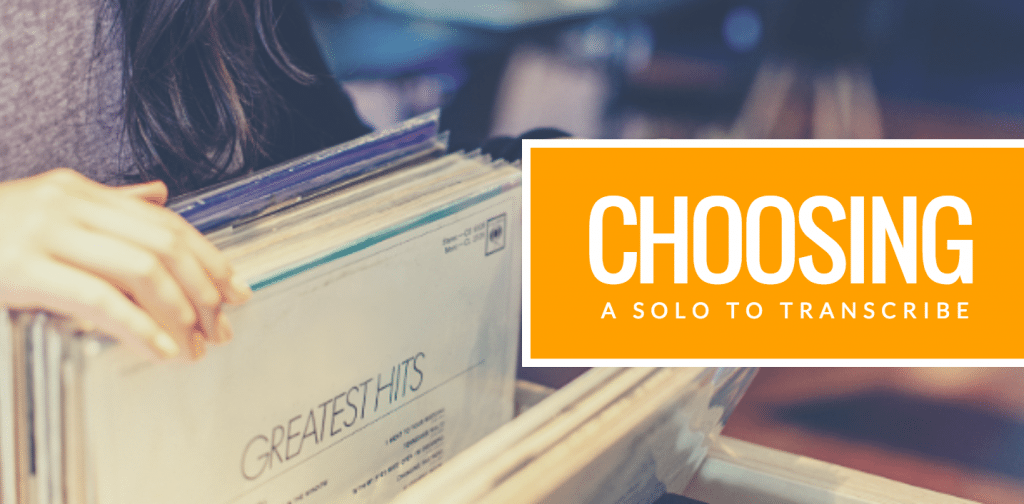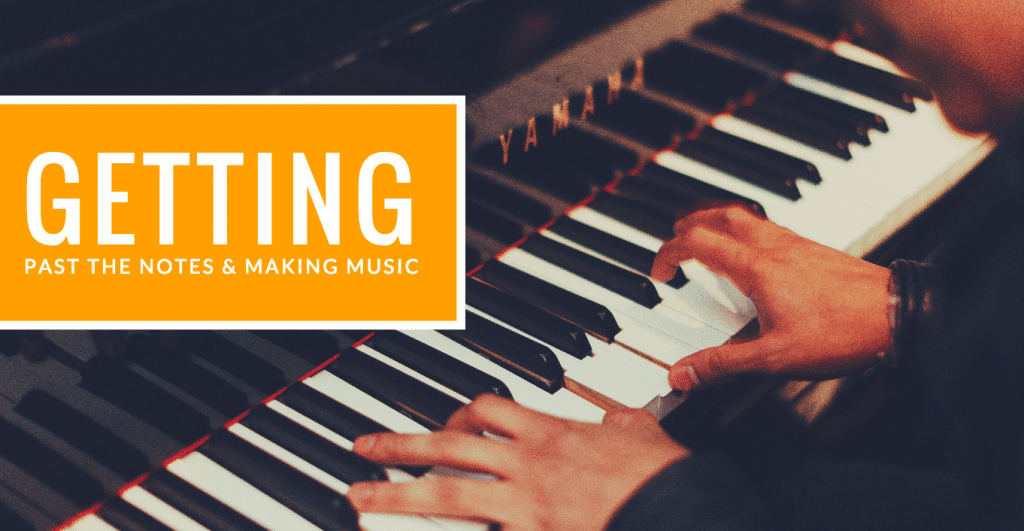Transcribing is the single most effective method of learning how to improvise…or so everyone says. The only problem is it can be a mystery figuring out what the transcription process actually entails. You have your instrument and a collection of your favorite recordings – now what?
The standard jazz resources are good at teaching the theory and technique of improvisation, but when it comes to acquiring jazz language it gets a little foggy…and the truth is, it took me years to figure out what transcribing was and how to use it to improve my playing.
I’m guessing you don’t have years to waste in the practice room. You need to go from guessing at the notes of your favorite solos to quickly acquiring language that you can use every time you improvise.
Before you jump into the practice room to start transcribing your next solo, here are the 3 things you need to know…
I) Is transcribing really transcribing?
If you ask a hundred different musicians to define transcribing, you’ll probably hear responses like: “writing the notes down, memorizing lines, analyzing solos, or stealing language from records.”
But what actually happens in the practice room when you’re “transcribing”? This is the question you should be asking yourself…
Before you pick out a solo or write down a single note you need to know exactly what’s involved in the transcription process, down to the nitty-gritty details. For starters, check out this post:
Transcribing is not Transcribing: How This Misnomer Has Led You Astray
And before you devote your valuable practice time to learning a solo by ear, you need to answer this question: Why are you transcribing and what are you going to get out of it?
Here’s why: The Real Reason You Should Start Transcribing Jazz Solos
It all goes back to the foundation of learning any skill – imitation. Finding a master and learning how they create, copying their techniques and methods.
It may sound obvious, but once you’ve figured out the “How” and “Why” of transcribing solos you’ve laid the foundation for improving as an improviser.
II) How to choose a solo to transcribe
So you understand the transcription process and you know why you’re doing it. Now it’s time to find a solo to transcribe.
Where do you look?
A quick web search will give you lists of hundreds of important jazz solos, but which is the best solo for you?
Start by finding a solo that means something to you, one that you’re excited to learn. Transcribing takes time and effort, and can even be frustrating. If you’re going to stick with it, you need to find something you’re passionate about.
Try keeping a list of solos that catch your ear, bookmark YouTube videos you like, and create a playlist of solos on your computer. This way, when you get into the practice room you have a solid list to choose from.
Here are a few tips on choosing your solo:
- Find something simple – Too many notes, fast tempos, and extreme ranges can cause a learning barrier when you’re transcribing. Pick a solo or musical line that you can make progress with in one practice session.
- Choose a solo that you can sing – The transcription process is about developing your ears and imitating the style of great players. The best way to do this is to sing along with a solo before you play it.
- Don’t feel obligated to learn the entire solo – You can get just as much out of a chorus or a even few lines of a solo that you learn really well. Limit the scope of the material and you’ll increase the benefit you get out of it.
Remember, the transcription process is more than just getting the notes. Transcribe for musical style, time, phrasing and articulation.
At the end of the day, it’s not so much the solo that you choose that’s important, rather the process that you go through in order to learn it.
III) What do you do after you’ve figured out the notes?
Many players stop after they’ve figured out the notes to a solo or written them down on a piece of paper.
Mission accomplished.
But if you want to see improvement, this is only the first step on your journey. After you’ve figured out the notes you need to ingrain them into your technique and your ear:
- Memorize the lines in all 12 keys
- Figure out what chords or progression they are used over
- And analyze why they work
Next you need to incorporate these techniques into your own solos. Learn to Apply the Jazz Language You’ve Transcribed in the practice room and in performance.
It’s crucial that you learn how to make these lines your own, so you are not just cutting and pasting licks into your solos.
A great way to practice this is to create your own exercises with the language you’ve transcribed. Check out this example that we created from a Sonny Rollins solo:
How to Create Your Own Jazz Exercises from a Transcribed Line
These tools will help you get started…
If you follow these 3 steps you’ll have a great start to successfully transcribing a solo. However, there are a few tools that will make the process much easier:
Transcribe! Software – One of the main learning barriers to transcribing is the tempo of the solo. It’s simply going by too fast to hear every note. Transcribe! allows you to slow down a recording and hear each note at your own pace – which is essential for learning and absorbing each solo.
The Ear Training Method – The entire transcription process hinges on one thing – your ear. The process of hearing intervals, lines, and chords can be frustratingly difficult for players that haven’t developed their ears. By spending time on ear training, transcribing solos will become much easier and much more beneficial.
And since you’re still reading, here are 10 more tips for transcribing your next solo.
If you’re frustrated with your solos, bored with your lines, and confused about how to improve, transcribing is the answer you’ve been looking for. But remember, the key lies in approaching the process in the right way!













